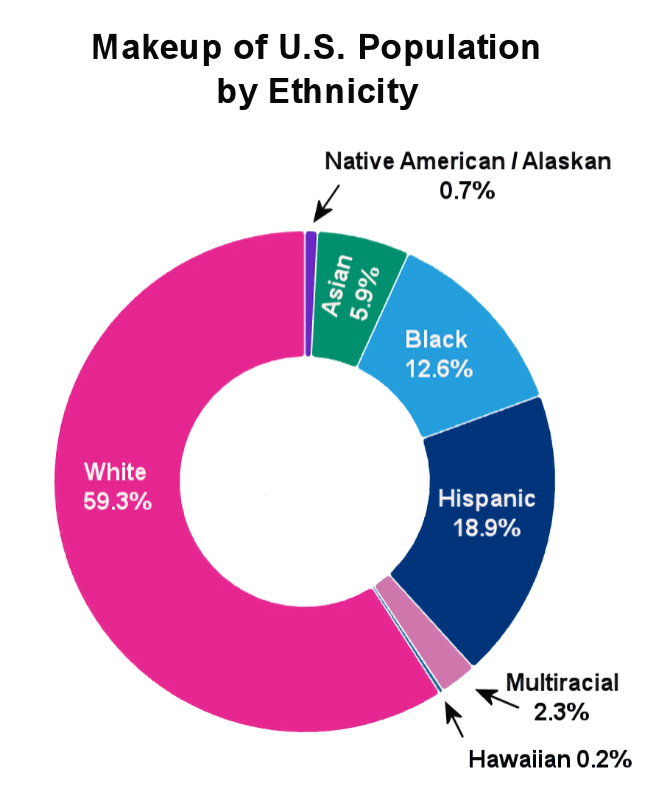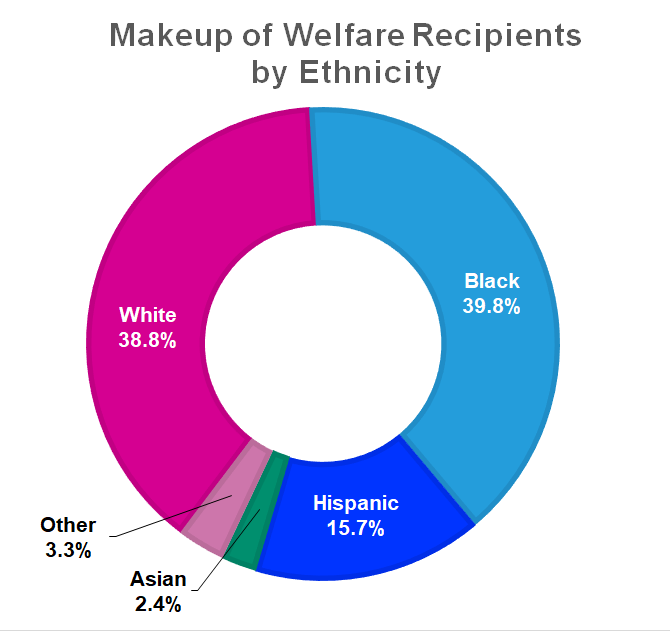"Reparations" is a hot-button topic of late, with people on both sides of the issue holding strong (but opposing) convictions. Today I'd like to shed some statistical light on the subject. But first...
What are Reparations?
According to Dictionary.com Reparations are:
- compensation in money, material, labor, etc., payable by a defeated country to another country or to an individual for loss suffered during or as a result of war.
- monetary or other compensation payable by a country to an individual for a historical wrong.
Some (but not all) African Americans believe that due to their ethnicity, they are entitled to compensation due to wrongs perpetrated against their ancestors. However, Cathlene Berry holds a dissenting opinion: "As a black woman, I really wish people would stop asking this question AND people stop answering it. I can't say this enough: AA in this day and time, DO NOT deserve reparations!!!!!! Those who did and are deserving of them are deceased!! Stop being baited into answering this dumb*** question."
David Miller says:
"Reparations are compensation for damage done. So the questions to be asked are—
- who has suffered damage; and
- who inflicted that damage?
Only those who have suffered actual damage are entitled to reparations, and then only from those who actually inflicted the damage.
The claims for reparations are being made in respect of “damage" that was inflicted centuries ago by people who are long-dead on other people who are also long-dead."
So:
Today, I'm not going to address the issue of whether or not reparations should be paid. Instead, I'd like to look at a few statistics.
Precedent:
The Civil Liberties Act of 1988 granted reparations to Japanese Americans who had been wrongly interned by the United States government during World War II and to "discourage the occurrence of similar injustices and violations of civil liberties in the future". The act granted each surviving internee $20,000 in compensation, equivalent to $40,000 in 2021, with payments beginning in 1990.
Of course, the major difference between this and the current push for slavery reparations is the word "surviving" since there are no survivors of pre-civil war slavery.
Statistics:
Total Population of the U.S. (According to the Census Bureau): As of this writing 334.8 million people.
Although it's difficult to get up-to-the-minute data, according to USA Facts: in 2021, the U.S. population was broken down this way:
Welfare Statistics:
There are approximately 12.8 million Americans on welfare, accounting for 4.1% of the US population. An estimated $131.9 billion is spent by the government on welfare each year.
Modern-Day Reparations?
Some believe that we are currently paying the modern-day equivalent of reparations to the descendants of former slaves and anyone who looks like them, even though it isn't being called reparations. The statistics supporting this thesis are as follows:
As we saw in the chart above, only 12.6% of the U.S. population is Black, but 39.8% of the welfare recipients are black. Put another way, Blacks are three times more likely to be on welfare than the general populace, which does sound a bit like reparations with a "needs" component.
Interestingly 18.9% of the U.S. population is Hispanic/Latino, but they only make up 15.7% of the welfare rolls. So, Hispanics are slightly less likely than average to be on welfare.
And Whites (non-Hispanic) make up 59.3% of the general U.S. population but only 38.8% of welfare recipients.
Note: This does not mean that 15.7% of all Hispanic Americans and 2.4% of all Asian Americans are on welfare. It refers to the percentage of welfare recipients that are on welfare.
More Welfare Statistics
Average Duration Spent on Welfare
How long do welfare recipients receive assistance?
• Less than 7 months – 19%
• 7-12 months – 15.2%
• 1-2 years – 19.3%
• 2-5 years – 26.9%
• Over 5 years – 19.6%
So, we can see that 19 percent of welfare recipients are "short-timers" who just need a bit of assistance to get through a rough patch. And I think most Americans would agree that is a good thing. Even if we add in the three categories up through two years we get a total of 53.5% (19%+15.2%+19.3%). So, just over half of all welfare recipients are on welfare for less than two years.
Other Questions?
- But what about those who aren't short-timers?
- How many of those in the 1-2 year category are going to go on to be on welfare for over 5 years?
- What percentage of welfare recipients come from parents who spent their life on welfare?
Since there are multiple different "welfare" programs, people can often collect from a variety of sources. According to the Heritage Foundation the average poor family with children receives the equivalent of $65,200 in government benefits and resources each year. Although, other sources state that the average welfare payment itself is only about $1,000/month.
According to a Department of Health and Human Services (HHS) Study:
- A Majority of Welfare Families Began with a Teen Birth
- More Than Half of All Welfare Children Were Born Outside of Marriage
- More Than a Third of Welfare Children are Dependent Because of the Breakup of Their Parents' Marriage
- Most Welfare Parents are Young, but Few are Still Teenagers
- A Majority of Welfare Mothers are Black or Hispanic
- Most Welfare Mothers Have Small Families
- Education Levels of Welfare Mothers are Higher Than Generally Believed, but Still Comparatively Low
- The Performance of Welfare Mothers on Tests of Verbal and Math Skills is Well Below Average
- Most Women with Preschool Children are in the Labor Force, but Most Welfare Mothers are Not
- Most Welfare Mothers Have Had Little Work Experience
- One-Third of Welfare Mothers Have Negative Views About Mothers Working Outside the Home
- When They Do Work Outside the Home, Welfare Mothers Tend to be Employed in Service Jobs
- Almost Half of Welfare Mothers are Long-Term Recipients
- Nearly One-Fifth of the Women Receiving AFDC has a Health Limitation
- One in Four Welfare Mothers Reports Alcohol-Related Problems
- Mothers Who Receive AFDC are Prone to Depression
One of our goals here at Your Family Finances is to provide education to help families (and individuals) succeed financially. And there are a few keys to doing that:
Keys to Financial Success:
- Learn how to manage your money properly.
This includes:
-
- Not spending more than you make.
- Learning how to budget properly.
- Cut unnecessary costs.
- Avoid Paying Interest (Debt)
- Saving
- Investing
- Get a good education that actually leads to a job (or good vocational training).
- Don't get pregnant until you are married (see items 1 & 2 in the HHS survey).
- Avoid addictions!
- Be willing to get a job once your children are in school.
You might also like:






